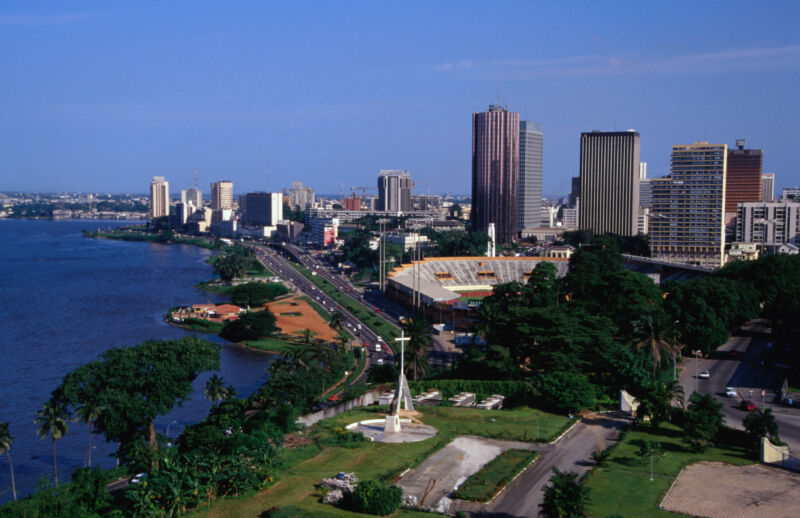
Internet outages occurred in 13 African countries on Thursday due to damage to undersea fiber optic cables. Some countries, including Ghana and Nigeria, are still suffering from nationwide power outages.
Multiple network providers reported internet outages yesterday, with Cloudflare’s Radar tool, which monitors internet usage patterns, detailing how the outages appeared to be moving from northern West Africa to South Africa. All 13 countries (Benin, Burkina Faso, Cameroon, Côte d’Ivoire, Ghana, Guinea, Liberia, Namibia, Niger, Nigeria, South Africa, The Gambia and Togo) were reported to have suffered nationwide power outages, with most of them Multiple networks in most countries were affected.
According to Cloudflare, internet outages in some countries were short-lived, such as in The Gambia and Guinea, which lasted for 30 minutes. Other blackouts, such as in South Africa, were longer (five hours) and some are still ongoing. As of this writing, Cloudflare reports that six countries, including Benin, Burkina Faso, Cameroon, and Côte d’Ivoire, are still experiencing outages.
Guinea, Liberia and The Gambia began experiencing outages around 05:00 UTC on Thursday, Cloudflare said in a blog post, which also shared graphs of internet usage in the affected countries. South of those countries, outages began in Cote d’Ivoire at 07:30 UTC that day, according to Cloudflare. Inland, the problem arrives in Niger in central Africa at 16:31 UTC.
Many sources, including local network providers such as Vodacom, MTN and the Nigerian Communications Commission, have reported damage to multiple undersea cables as the culprit. “The cuts occurred somewhere in Côte d’Ivoire and Senegal, followed by disruptions in Portugal,” NCC public affairs director Reuben Muoka said in a press release on Thursday.
Microsoft said in an Azure status report that it “identified” that “multiple cables” along the West African coast, including the African Coast to Europe, MainOne, SAT3 and West African Cable Systems, were experiencing disruption. You can view a map of damaged cables here. The cause of the cable damage has not yet been determined.
“In addition to these cable impacts, ongoing cable cuts in the Red Sea (EIG, Seacom, AAE-1) are also impacting overall capacity along the east coast of Africa. Together, these events have reduced total network capacity across much of the African region,” Microsoft said.
Earlier this month, three undersea fiber optic cables were severed in the Red Sea, disrupting around 25% of internet traffic in the Middle East, Asia and Europe and forcing plans to reroute traffic. The cause of damage to these cables has not been confirmed.
Internet outages related to undersea cables are not new, as such cables account for an estimated 99% of intercontinental traffic, according to TeleGeography’s calculations citing Euroconsult data (TeleGeography notes that the rarity of the data means its calculations are not “precise”) and can be sustained a period of time. For example, most parts of Tonga had to rely on satellite dishes to access the Internet for 12 days in 2019 due to submarine optical cables.